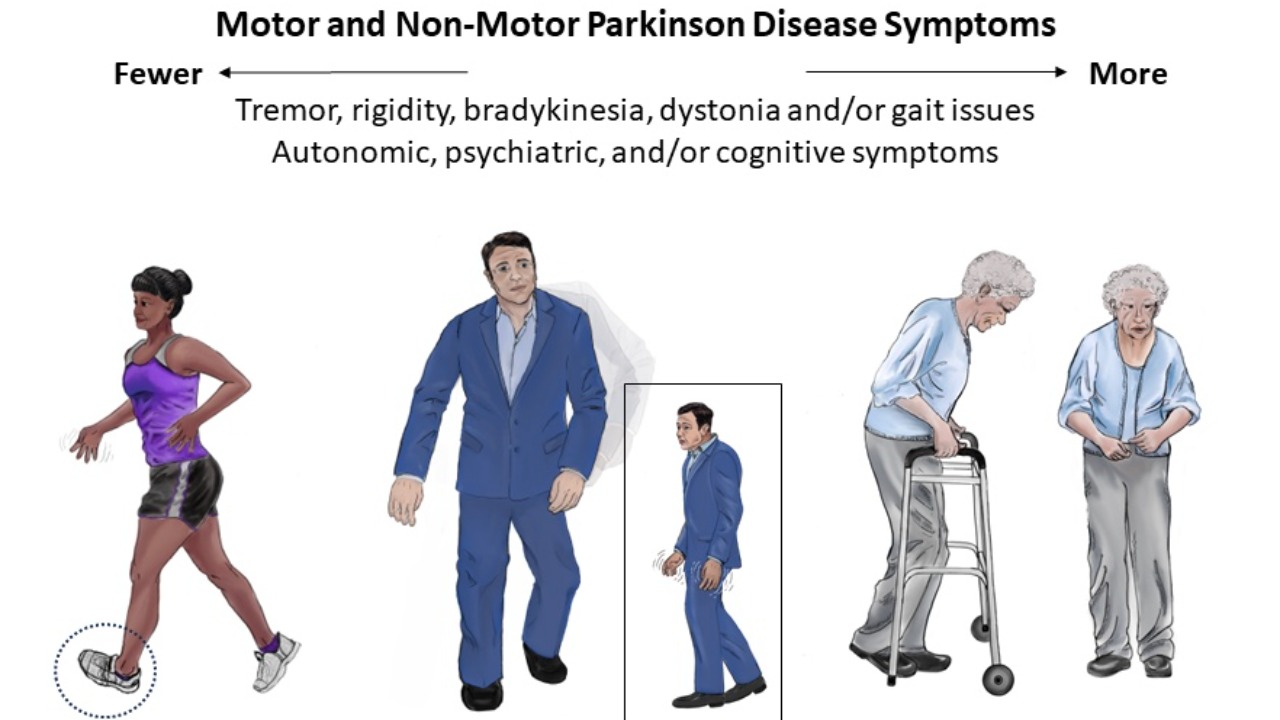
Recent advancements in visualizing mitochondrial proteins have provided a significant boost to Parkinson’s disease research. By understanding the role of mitochondrial dysfunction in neurodegenerative disorders, scientists are uncovering new pathways for potential treatments. This exploration into mitochondrial protein imagery highlights the exciting developments and their implications for Parkinson’s research.
The Role of Mitochondria in Parkinson’s Disease

Mitochondrial Dysfunction and Neurodegeneration
The contribution of mitochondrial dysfunction to the pathogenesis of Parkinson’s disease has been a focal point of research for many years. Mitochondria, known as the powerhouses of the cell, are crucial in maintaining neuronal health. When these organelles malfunction, it leads to an energy crisis within neurons, causing cell death and contributing to neurodegeneration. Accumulation of damaged mitochondria has been observed in patients with Parkinson’s, providing evidence of how critical mitochondrial health is to preventing neuronal decline.
The impact of damaged mitochondria is profound, affecting not only the energy production but also the regulation of apoptosis, or programmed cell death. Studies have shown that impaired mitochondrial function can lead to increased oxidative stress, which further exacerbates neuronal damage. This link between mitochondrial dysfunction and oxidative stress underscores the importance of maintaining mitochondrial integrity to prevent the progression of neurodegenerative diseases like Parkinson’s.
Genetic Factors and Mitochondria
Genetic mutations have been identified as significant contributors to mitochondrial impairment in Parkinson’s disease. Several genes, such as LRRK2 and Parkin, have been found to influence mitochondrial function. These genes play roles in maintaining mitochondrial quality control, and mutations can lead to the accumulation of defective mitochondria. This genetic link provides a deeper understanding of why some individuals are more susceptible to Parkinson’s disease.
Recent research has delved into how specific genetic factors exacerbate mitochondrial impairment. For instance, mutations in the PINK1 gene have been associated with an inability to clear damaged mitochondria, a process essential for cellular health. Understanding these genetic factors opens avenues for targeted therapies that could potentially restore normal mitochondrial function in affected individuals, offering hope for those with genetically predisposed Parkinson’s disease.
Advancements in Mitochondrial Protein Imagery

Cutting-edge Imaging Techniques
New imaging technologies have revolutionized our ability to visualize mitochondrial proteins in unprecedented detail. Techniques such as super-resolution microscopy and cryo-electron microscopy provide high-resolution images that reveal the intricate structures and dynamics of mitochondria. These advancements allow researchers to observe how mitochondrial proteins interact and change in real-time, shedding light on the complex processes that underlie mitochondrial dysfunction.
These cutting-edge imaging techniques have not only enhanced our understanding of mitochondrial dynamics but also their health. By providing insights into the structural changes that occur in response to disease, these technologies are crucial in identifying potential therapeutic targets. The ability to visualize proteins at the molecular level ensures that researchers can better comprehend how mitochondrial dysfunction contributes to Parkinson’s disease.
Implications for Early Diagnosis
The improvements in mitochondrial imagery have significant implications for the early diagnosis of Parkinson’s disease. By detecting mitochondrial abnormalities before clinical symptoms appear, researchers hope to develop biomarkers that can predict disease onset. Early detection is critical in managing Parkinson’s, as interventions are more effective when administered at the earliest stages of the disease.
Moreover, mitochondrial imagery holds promise as a biomarker for disease progression. Understanding the changes in mitochondrial structure and function over time can provide insights into how the disease evolves. This information is invaluable for assessing the efficacy of treatments and could lead to personalized therapeutic approaches that slow or halt disease progression.
Therapeutic Implications of Mitochondrial Research

Targeting Mitochondrial Pathways
Research into mitochondrial pathways has opened new avenues for potential therapies aimed at restoring mitochondrial function. By targeting specific mitochondrial proteins, scientists hope to develop drugs that can halt or reverse the damage caused by mitochondrial dysfunction. These therapeutic strategies focus on enhancing the cell’s ability to clear damaged mitochondria and improve energy production.
One promising area of research is the development of drugs targeting the pathways involved in mitochondrial quality control. For example, compounds that enhance the activity of the PINK1–Parkin pathway could promote the removal of damaged mitochondria, reducing oxidative stress and improving neuronal survival. The exploration of such targeted therapies highlights the potential of mitochondrial research in providing new treatment options for Parkinson’s disease.
Innovative Treatment Strategies
Innovative treatments derived from mitochondrial research are currently in various stages of development, from preclinical studies to clinical trials. These strategies include gene therapies designed to correct genetic mutations that impair mitochondrial function and small molecules that modulate mitochondrial dynamics. The success of these interventions in experimental models provides hope for their future application in humans.
Case studies, such as the use of mitochondrial-targeted antioxidants, have shown promising results in reducing oxidative damage and improving mitochondrial health. These studies emphasize the potential of mitochondrial research to yield novel treatment strategies that target the root causes of Parkinson’s disease rather than just alleviating symptoms.
Challenges and Future Directions in Mitochondrial Research

Technical and Methodological Hurdles
Despite the exciting advancements, there are still significant technical and methodological hurdles to overcome in mitochondrial research. Current imaging techniques, while powerful, have limitations in terms of resolution and accessibility. Additionally, the complexity of mitochondrial dynamics presents challenges in interpreting imaging data accurately.
Researchers are actively seeking strategies to overcome these challenges, such as developing more sophisticated imaging tools and improving data analysis methods. Innovations in nanotechnology and computational modeling hold promise in enhancing our ability to study mitochondria in greater detail. By addressing these hurdles, researchers aim to unlock even more insights into the role of mitochondria in Parkinson’s disease.
Collaborative Efforts and Interdisciplinary Research
The advancement of mitochondrial research relies heavily on global collaboration and interdisciplinary approaches. By bringing together experts from various fields, such as genetics, biochemistry, and neurology, researchers can accelerate the development of effective therapies for Parkinson’s disease. Collaborative efforts are essential in integrating diverse perspectives and expertise, leading to innovative solutions that address the multifaceted nature of mitochondrial dysfunction.
Interdisciplinary research is particularly vital in translating basic scientific discoveries into clinical applications. For instance, the collaboration between academic institutions and pharmaceutical companies has led to the development of new drugs targeting mitochondrial pathways. These efforts highlight the importance of partnerships in bridging the gap between laboratory research and real-world treatments, ultimately benefiting patients with Parkinson’s disease.